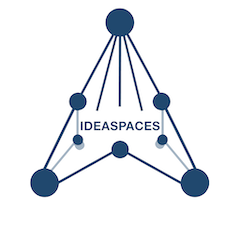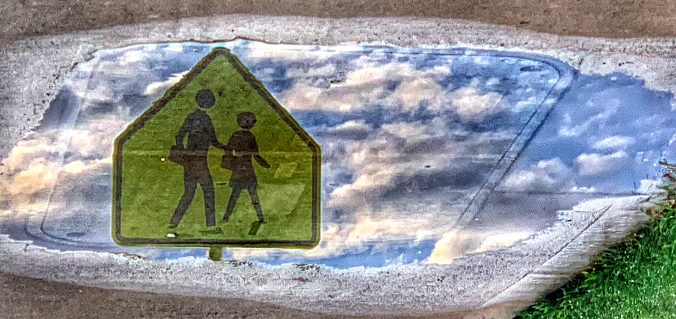Transitioning to remote teaching has, to put it mildly, been a chaotic and uneven process. Those of us who look deeply into what we are doing in the classroom quickly recognized the shortcomings of teaching the same way via video conferencing. Of course, teaching is but a means to an end. The real question is how you preserve learning under these circumstances. The Hybrid Plus modality requires a deep re-evaluation of how we teach and learn and a recognition that adapting those practices to the shifting strictures of technology is essential to maintaining engagement and success in a particularly fragmented learning environment.
As I redesign my course for the summer and beyond I am applying design principles to the new sets of constraints and opportunities that emerged from the process. One way to approach this is to break down teaching into three elements that apply to virtually all classes: asynchronous elements, synchronous elements, and assessment strategies (which may be done both synchronously and asynchronously). Deconstructing classes into these three categories helps us understand how the different pieces will respond to the limitations of remote teaching best and which areas of student engagement are challenged the most by the shift in modalities.
Asynchronous Elements
Which parts of instruction are best delivered asynchronously? Most content distribution would fall under this category. While teaching Socratically is not possible asynchronously, its loss is partially compensated for through persistence and replay-ability of online content. Prerecorded videos are a good substitute for the scaffolding our lectures provide. They should be short so that the content is related in chewable bits (under 10 minutes is ideal). Obviously, written material can be used to supplement this. However, I encourage teachers to remember that the web of 2020 is a profoundly visual medium and this offers many kinds of opportunities to mix and match different forms of communication. Longer bits of faculty-generated content should be broken up and supplemented with visual media wherever possible. Finally, it’s important that content in a disconnected medium such as remote learning make narrative sense. It’s particularly important to recognize the narrative journey your students are on and to pay particular attention to highlighting the relevance of any particular piece of content or content module to the overall story.
Synchronous Elements
Synchronous interaction in a world of social distancing is a precious commodity. Therefore, it is essential to think carefully about maximizing the impact of synchronous interactions both between teacher and student(s) as well as among the students. The disinterest and distraction we observe in a physical environment is amplified in remote contexts. Instructor-led class meetings should be centered on an active project and should be designed for small (12 or less) groups of students. I plan to schedule periodic working sessions with the design groups in my class. The only will be the only instructor-led synchronous group activity. They will be incentivized, not mandatory in nature. In these sessions the groups will be working on specific activities directly tied to the completion of their projects.
Maximizing opportunities for individualized instruction should be prioritized in all synchronous class planning. There are logistical challenges in meeting with large numbers of students individually but mechanisms to target those struggling the most should be developed within the class structure. This summer I am partnering with a librarian who will be embedded in my class to complement my engagement efforts. Creating opportunities for individual interactions leverages the affordances of instructional methods that are divorced from the strictures of space and time. The most effective synchronous elements of my remote learning class were actually the one-on-one meetings where I checked in with my students, reviewed their work, and, most importantly, answered specific questions that they might have hesitated to ask in front of a larger group.
The most desirable, and hardest to achieve, synchronous interactions are student-initiated interactions. The existence of these indicates that the students are self-motivated to engage with the material socially. The problem is many of our online systems are not optimized for this kind of interaction. It is essential to encourage students to congregate on their own. Many institutions do not have student-driven videoconferencing platform or chat platform within the LMS. Although less-than-ideal, the only real alternative in those circumstances is to direct students to external tools such as Zoom, Slack, and Facetime/iMessage to give them the informal learning tools they will need. Institutions should prioritize giving their students this kind of functionality.
Assessment Strategies
Traditional assessments administered online are subject to compromise. Simply transferring in-person exams to an online environment invites gaming the exams (cheating). This is an unwinnable war. If for no other reason than the integrity of the class (and there are many others) reassessing your assessment strategy is a central part of this exercise. The online environment favors authentic assessments. If you think deeply about most in-person assessments, a large part of what they demonstrate is the student’s ability to take the test. The student’s mastery of the subject is often only a tertiary effect. Why do we test this way? In short, it’s what’s possible using the technology of pen and paper, which has characterized education in one way or another since Homer. New media opens up new possibilities in this area. Students can create meaningful artifacts to demonstrate their learning in a class that have a life far beyond the professor’s filing cabinet. Authentic assessment is more meaningful to students and therefore the incentive to cheat is lowered and, furthermore, their ability to cheat is compromised when they are creating something new. Finally, a properly structured act of creation is also an act of teaching. The best way to learn is to teach.
Poor assessment strategies are amplified online as courses quickly turn into a box-checking exercises with periodic assessments merely providing the more annoying box. Judgement from a distant instructor is also profoundly depersonalizing and disempowering, both of which are severely destructive to the learning process. Authentic, personalized assessment should therefore be central to any learning process. There are many ways this can be achieved. Students can record video submissions to assignments, create public blogs, or execute semester-long projects such as the Final Portfolio project in my class. The technology gives them new ways of expressing their understanding. Effective assessment strategies will leverage these possibilities.
Fundamentally, teaching in a Hybrid Plus world requires opening minds to the opportunities that the technology offers. Students and teachers alike will have to spend some time rediscovering what it means to learn. Not all things will be better in this environment, although I am confident that over time we will settle on a new normal that optimizes the best of both online and physical environments. Our sacrifices today may help chart a way into a new post-pandemic educational landscape that will be better than the pre-pandemic one. The world will never be the same. It is our responsibility to make sure that this change is for the better.

